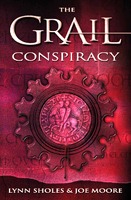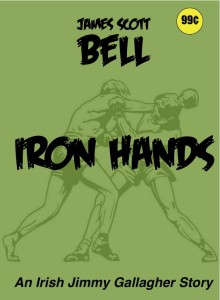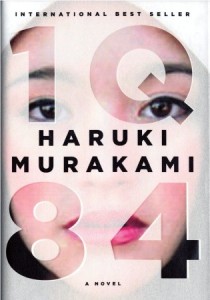![[image4.png]](http://killzoneblog.com/wp-content/uploads/2011/12/image4.png) It’s Winter break here at the Kill Zone. During our 2-week hiatus, we’ll be spending time with our families and friends, and celebrating all the traditions that make this time of year so wonderful. We sincerely thank you for visiting our blog and commenting on our rants and raves. We wish you a truly blessed Holiday Season and a prosperous 2012. From Clare, Kathryn, Kathleen, Joe M., Nancy, Michelle, Jordan, John G., Joe H., John M., and James to all our friends and visitors, Seasons Greeting from the Kill Zone.
It’s Winter break here at the Kill Zone. During our 2-week hiatus, we’ll be spending time with our families and friends, and celebrating all the traditions that make this time of year so wonderful. We sincerely thank you for visiting our blog and commenting on our rants and raves. We wish you a truly blessed Holiday Season and a prosperous 2012. From Clare, Kathryn, Kathleen, Joe M., Nancy, Michelle, Jordan, John G., Joe H., John M., and James to all our friends and visitors, Seasons Greeting from the Kill Zone.
See you back here on Monday, January 2.
Monthly Archives: December 2011
Be Thankful That You’re a Writer
James Scott Bell
Twitter.com/jamesscottbell
As we close up shop for a couple of weeks here at TKZ, it’s the perfect time to reflect on the year past and the year to come, and to pause and be thankful for the blessings you enjoy. If there is one thing world religions and secular philosophy largely agree upon, it is that gratitude is the key to happiness. Learning how to be thankful consistently may take some practice and discipline, but it can be done. And it is so worth it.
It’s High Time We Abandon The Printed Book Once and For all.
I’ve been thinking about books. Magazines. Newspapers. Sales Brochures. Mail.
Thank You All
I’m taking the occasion of this final Killzone post before our Holiday Hiatus to say some thank-yous.
To the readers of Suspense Magazine for naming my novel Threat Warning the Best Book of 2011.
To my colleagues here at TKZ for enriching my life–in some cases with their friendship, but in all cases with well-considered insights into a craft that is always worthwhile, and a business that makes less and less sense. The quality of discussion in this corner of cyberspace is second to none.
To my wife, Joy, for making every day special. Her boundless patience allows me to pursue two full-time careers.
To my son, Chris, for his wisdom, his knowledge of all things electronic (and a never-grudging willingness to train his untrainable dad on such things), his love of books and music and movies, and his unfailingly good character.
To my publishing team, who together make Joy’s boundless patience seem like a reasonably good idea. My agent, Anne Hawkins, makes everything else happen. Because of her, I get to work with Micheala Hamilton, the single best editor I’ve ever encountered (and I’ve worked with quite a few). But she doesn’t toil alone. The rest of the team–Adeola Saul, Alexandra Nicolajsen, Laurie Parkin, Steve Zacharius and the entire sales team–show old school commitment to embracing new developments in the industry.
To the authors in my monthly critique group–Donna Andrews, Ellen Crosby, Alan Orloff and Art Taylor–for at last making it easy for me to share my works in progress with others.
To my friends and colleagues at the Institute of Scrap Recycling Industries–my Big Boy job–for granting me a venue to allow me to exercise a completely different part of my brain. Special thanks go to Robin Wiener, Anne Marie Horvath, Joe Bateman, Commodor Hall, Kent Kiser, Joe Pickard, Chuck Carr and Ed Szrom.
To dear friends because they’re dear friends. Lists are dangerous because they can’t possibly be all-inclusive, but I offer a special nod to Bob and Bert Garino, Pat Barney and Sam Shockley, John and Susan Miller, and Jeff Deaver.
Finally, and most importantly, to readers everywhere. I love that you read and respond to my posts here on TKZ, and I love that you read my books and provide me feedback. That ability to communicate directly with readers is one of the great pleasures of the 21st Century.
I wish all of you–all of us–a wonderful Holiday Season, and a terrific 2012. May none of us gain more than ten pounds in the next two weeks.
Seeya next year!
Perseverance
By Jordan Dane
For my last post in 2011 with TKZ, I found a Wall Street Journal article on self-publishing that offered something a little different. We’ve all heard the big blockbuster sales of a precious few who have seen sales of more than a million books, but who can really relate to that? We can all hope lightning will strike and we’ll be the one benefiting from that good fortune, but I picked out the elements of this article that addressed the digital trend, growing successes that have not gotten much highlight, and what one author—Darcie Chan—did to grow her self-pub sales.
Many have heard about Amanda Hocking and John Locke’s stories of hitting it big. These stories represent a miniscule fraction of independent authors, but success is still being found. According to Amazon, 30 authors have sold in excess of 100,000 copies of their books through Amazon’s self-pub Kindle program and a dozen more have seen sales of 200,000+ — a program started in 2007 that allows authors to upload their own books, set prices, and publish in multiple languages. Barnes & Noble have their own version for their Nook readers.
Self-published books have fueled the surge in digital sales from $287 million in 2009 to $878 million in 2010, according to the Association of American Publishers. Analysts speculate that e-book sales will pass $2 billion in 2013. We’ve all seen how the publishing industry (authors, agents, publishers, stores, etc) are scrambling to figure out how to capitalize on this exploding trend.
So here is one author’s story about how she stuck to her dream of writing a book she believed in and took the plunge.
It took Darcie Chan two and a half years to write her book during the hours she wasn’t working her day job of drafting environmental legislation. After getting feedback from friends and family, she sent queries to more than 100 agents, but since it was a cross genre story (with elements of romance, suspense and mystery), it didn’t fit neatly on retail book shelves and got rejected as a “tough sell.” She eventually landed an agent who submitted her book to over a dozen publishers, they all rejected it for the same reason, so the book of her dreams landed in a drawer and Darcie got on with her life. FIVE YEARS LATER, she read about the rise in e-book sales and self-publishing and decided to do something about her dream. Here is what she did:
She made her own cover for THE MILL RIVER RECLUSE (about an agoraphobic philanthropist) from a photo her sister had taken of an old mansion and added Photoshop graphic elements to make it look gloomy.
She uploaded her book into the Amazon Kindle self-publishing program and sold a trickle of copies. A few weeks later, she loaded it onto Barnes & Noble, Smashwords, Apple’s iBookstore, Sony, and Kobo.
Her first royalty check was $39. That’s when she noticed that popular e-books were priced at $0.99 and immediately dropped her price from $2.99 to $0.99. (That cut her royalty percentage under Amazon rules from 70% on books priced at $2.99+ to 35% for novels priced below that threshold.) But sales picked up immediately for her and she found new readers who liked her book.
During the first month at her lower price, she sold 100 copies. She was thrilled with this, but by the end of June, her book got mentioned on a site called Ereader News Today, that posts tips for Kindle readers. Over the next two day period, she sold another 600 copies, giving her hope that she could drive her own sales.
She spent $1,000 on marketing, buying banner ads on websites and blogs devoted to Kindle readers and also bought a spot on Goodreads.com with its more than 6.6 million members.
She also learned that self-published authors could pay to have their book reviewed by some sites. She paid $35 for a review on IndieReader.com (who no longer offers paid reviews) and she paid $575 for an expedited review from Kirkus Reviews, a notable book review journal and website. (The Kirkus review service, launched in 2005, gives self-published authors the option to review privately if the review is negative. Darcie opted to have her book reviewed on Kirkus’s website and Kirkus called the novel “a comforting book about the random acts of kindness that hold communities together.” Darcie used quotes from the review and other reviews on Amazon and B&N for publicity purposes, to encourage more reviewers to try her book.
By July, she had sold more than 14,000 copies and got her noticed and featured on two of the biggest sites for e-book readers, which generated more sales. In August, she had sold more than 77,000 copies and had hit the New York Times and USA Today e-book bestsellers lists—and later she landed on the Wall Street Journal’s list too. In September, it sold more than 159,000 copies and 413,000 copies have sold to date.
Darcie and her agent have since offered her book to traditional publishers, but none have matched her royalty rates of 35-40% that she gets from Amazon and B&N. (Average print royalties range 10-15% with digital royalties usually set at 25%.) Simon and Schuster offered to distribute the book—as is—but Darcie wants the book professionally edited and marketed. So as of now, she is staying the course, content with how well her book is selling. She made an estimated $130,000 before taxes PLUS she’s getting a steady royalty check every month.
And from her success, she’s seeing interest from other parties. Foreign rights and audio book publishers have made offers and six movie companies have inquired about film rights.
Bottom line is that Darcie didn’t give up, even when everyone told her “NO.” No matter how you’re published, I think we can all learn from this woman’s perseverance.
This is my last post for 2011 since TKZ will be on our 2-week hiatus starting Dec 19th—the day my virtual tour starts with YA Bound. Happy holidays to our TKZ family and have a great 2012.
The Amazon Daily Deal
By Joe Moore
Today, Amazon has graciously chosen THE GRAIL CONSPIRACY (Midnight Ink, 2005) as their “Daily Deal”. This means that for one day only, they have reduced the price of the Kindle version to $0.99. I don’t know the  process by which they choose books for their Daily Deal, but I really appreciate it. Back on October 18, they picked my latest thriller THE PHOENIX APOSTLES, and by the end of the day, it became the #1 bestselling Kindle book on Amazon. So having 2 of my novels picked is a really big deal, and really cool. As you can imagine, I’m hoping for a repeat performance today.
process by which they choose books for their Daily Deal, but I really appreciate it. Back on October 18, they picked my latest thriller THE PHOENIX APOSTLES, and by the end of the day, it became the #1 bestselling Kindle book on Amazon. So having 2 of my novels picked is a really big deal, and really cool. As you can imagine, I’m hoping for a repeat performance today.
THE GRAIL CONSPIRACY is very special to me because it began my writing career being the first book I ever had published. And the story of how it came about is also very special.
In 1994 a friend phoned my co-writer Lynn Sholes and told her to read the article Crusade’s End? in the April issue of Discover magazine. The caller thought it had great promise as a premise for a book. The article was about Leon Decoeur, an archaeologist, working late on Christmas Eve at a dig site in Jerusalem where he uncovered an ancient cup he believed could be the Holy Grail. Preserved inside the cup was a brown residue, later determined to be human blood. Discover quoted Decoeur, "You remember that cosmologist a couple of years back who claimed he’d seen the face of God? Well, I think we’re going to see His DNA."
As all writers do, Lynn started asking What If questions. In this instance it was: what if someone used the DNA to clone Christ?
At about the same time, I was a freelance writer reviewing books for the South Florida Sun-Sentinel and other Florida newspapers. A mutual friend introduced me to Lynn. I reviewed her second novel (she was writing historical fiction at the time and eventually had 6 novels published) and we began talking about the business of writing. I joined Lynn’s local critique group where we often discussed current projects and those we envisioned in the future. The Discover article story came up repeatedly, but Lynn just didn’t feel comfortable taking on the task of making a book from it since it was outside her genre. So, even though the story intrigued everyone who heard the cloning-Christ premise, it sat dormant until I couldn’t stand the waste of a good idea any longer. One day, several years after the magazine article, I called Lynn and “threatened” her. I told her if she didn’t write that story, I would outright steal the idea and write it myself. I think that shocked her into the reality of “getting on with the rat killing!” as she likes to say. Lynn and I decided on collaboration. We spent countless hours writing a detailed, 52-page, chapter-by-chapter outline. Finally finished, we agreed we didn’t like major segments and started all over again, adding more dimension and texture.
The more research we did, the bigger the story grew. Finally, we thought the skeleton was ready for the flesh, and we began the first draft. That’s when we became acutely aware of the differences in our writing styles: her voice was lyrical, mine bold. Those two voices fought each other on the page. But we also realized our strengths: Lynn’s was character development while mine was plotting. It took a great deal of work to put our egos aside and build trust in each other before our different styles started to blend. (This is why you rarely see collaboration in writing fiction. It’s generally an impossible task.) After three years of working on our book, we felt, as did our beta readers, that our voices were blending and our strengths were paying off to the story’s advantage. When our manuscript was finally complete, we sent it off to Lynn’s agent who loved it.
Then came the bad news. Enter Dan Brown.
Now, TGC was conceived, outlined, and drafted a decade before Brown’s book, still he took all the air out of our story. Even though TGC was not the same story as THE DA VINCI CODE, it was still a “Grail” story. And there were small coincidences and idiosyncrasies in the plots, like killing someone off and making it look like an allergic reaction. So we went back to the drawing board. BTW, our working title from the beginning was CORPUS CHRISTI (Latin for the Body of Christ). When we finished, we changed it to THE ENOCHIAN PROPHECY.
We worked our way through the book again, doing more research so we could replace those close calls with THE DA VINCI CODE. And we even added a few additional twists. Then we sent it off again.
It found a home with Llewellyn Worldwide, and the book was published in 2005 as part of Llewellyn’s launch of their new mystery imprint, Midnight Ink. They wisely changed the title from THE ENOCHIAN PROPHECY, which no one knew the meaning of much less could pronounce, to THE GRAIL CONSPIRACY.
That year, it was named Book Of The Year by ForeWord Magazine, landed on a number of international bestseller lists, and was eventually translated into 24 languages.
TGC was the beginning of my writing partnership with Lynn Sholes resulting in 5 novels published: THE GRAIL CONSPIRACY, THE LAST SECRET, THE HADES PROJECT, THE 731 LEGACY, THE PHOENIX APOSTLES and the short story BAM! JUST LIKE THAT. We’re closing in on finishing the first draft of #6, the standalone thriller THE BLADE.
So what is THE GRAIL CONSPIRACY about? Here’s the website promo copy.
From a newly unearthed crusader’s tomb in Iraq to the guarded treasure vaults of the Vatican to a secret genetics lab on the banks of the Mississippi, THE GRAIL CONSPIRACY uncovers a sinister plot of ultimate revenge.
A small wooden box hidden for centuries is passed on to network correspondent Cotten Stone by a dying archaeologist. With his final breath, spoken in a language Cotten has not heard since childhood, he declares that she is "the only one who can stop the sun . . . the dawn." Unable to open the box, Cotten seeks the help of John Tyler, a noted biblical historian and Catholic priest on leave of absence from his duties but not his vows. Inside the box, they discover a cup wrapped in a cloth bearing the insignia of a powerful medieval order that professed to be the Guardians of the Grail.
Cotten is propelled into the headlines as she and John deliver the Cup to the Vatican for authentication, and she reports the story of its journey from Calvary to cable TV. But her life quickly becomes caught up in a global plot driven by an ancient sect devoted to bringing about the Second Coming. As those around her fall victim to the Grail Conspiracy, Cotten soon learns her true legacy and must question if she is stopping an abomination or is she working on the side of Evil. In the final conflict she learns why she is the only one who can stop the ultimate revenge against God by the Prince of Darkness.
If you haven’t read TGC, please take advantage of Amazon’s $0.99 Daily Deal and download a copy to your Kindle. If you’ve already read it, I hope you’ll download and enjoy it again. I’ll be forever in your debt.
—————–
This is my last post until next year since TKZ will be taking it’s annual 2-week Winter break starting December 19. Thank you for reading and commenting on my posts throughout the year. Merry Christmas and Happy New Year to you all.
It’s a Wrap!

10 Reasons Why I Am Self Publishing
My Favorite Books of 2011
It has become a practice at the end of a year to compile a “Best Of” list. That is tough to do, and to call it such is a bit of a conceit. Who am I to say? The following is a whittled down list of books that I read in 2011 that grabbed me and touched me. I had 27 or so to start with; when I started to pare it down, there were three that I felt had to be there for certain — THREE SECONDS, THE DEVIL ALL THE TIME, and FEAST DAY OF FOOLS; I literally picked the rest of the titles out of a hat. Here they are, in no particular order:
THE WOODCUTTER — Reginald Hill
LUCIFER’S TEARS — James Thompson
THE DEVIL ALL THE TIME — Donald Ray Pollack
THE HYPNOTIST — Lars Kepler; translated by Ann Long
THREE SECONDS — Anders Roslund & Borge Hellstrom; translated by Kari Dickson
FEAST DAY OF FOOLS — James Lee Burke
THE PACK — Jason Starr
BREAKING POINT —Dana Haynes
COLD SHOT TO THE HEART — Wallace Stroby
SOFT TARGET — Stephen Hunter
John Miller will be here next Saturday and I will be back after the first of the year, hopefully with some interesting news. Merry Christmas and Happy New Year to you all. And thank you for spending time with me this year.
Judging a Book by its Cover
There was an interesting piece in last week’s New York Times on the transition back to so-called “gilded covers.” It confirmed a theory that I’ve had for a few years now. Despite the gloomy predictions of prognosticators, I don’t believe that hardcover novels are facing extinction. For one thing, libraries will always need hardier books to loan out. However, I do think that as eReaders become increasingly prevalent, hardcovers print runs will be dramatically reduced. Not phased out entirely, but the vast majority of books will be released in trade paperback form. The hardcovers that are produced will predominantly be special limited editions. More care will go into cover design and production, from the paper quality to the font to the dust jackets. And chances are that the price will increase as a result, since you’ll be paying for something a bit more special.
Currently, hardcover novel sales are being hit hard. As of September, hardcover sales had declined 25% for the year. Meanwhile, eBook sales rose 161%. Total eBook sales are forecast to reach $10 billion dollars by 2016, and thus far Kindle sales have outpaced Amazon’s rosiest predictions for the Christmas season. Mass Market paperbacks are being phased out more rapidly than anticipated, and many publishers are switching even consistently bestselling novelists to trade paperback rather than hardcover releases.
And let’s be honest– hardcover book sales should be dwindling. Now, before all you fans of “real” books, who extol, “the weight of it in my hands, the smell of ink on paper” jump all over me, hear me out.
Recently I was standing in my father’s library, poring over his collection. He’s always been an avid reader, and he has a stunning collection of leather bound books. Books that are truly works of art, and an experience to read. Books with soft vellum paper and calfskin bindings; books that really do have a special smell and feel to them.
Compare that to my collection of hardcovers. The vast majority of them don’t merit the same level of adulation. The truth is, most are just as mass-produced as MMPs. They’re heavy, cumbersome, printed on relatively cheap paper with cardboard covers and a dust jacket. Honestly, few are dramatically nicer than a trade paperback. By and large, those books don’t look stunning lined up on my shelf.
So given a choice, why would I spent $20-30 for a book that, content-wise, I can enjoy on my Kindle for half that price?
I would, however, pay a bit more for something that was special.
Publishers are finally coming around to that realization. The NY Times piece discusses recent hardcover releases that included special touches. Haruki Murakami’s latest novel 1Q84 features a “translucent jacket with the arresting gaze of a woman peering through.” Based on the book’s impressive sales so far, which has been the reverse of most books, (95,000 hardcover as opposed to a mere 28,000 in eBooks), investing in exquisite covers can help print sales.
The irony of this for me is that for the first time next year, my books will start appearing in hardcover form. Given the current sales climate, I’m nervous about shifting formats at this stage. However, I do think that we have an amazing cover, and hopefully the rest of the production quality will match up to it.



